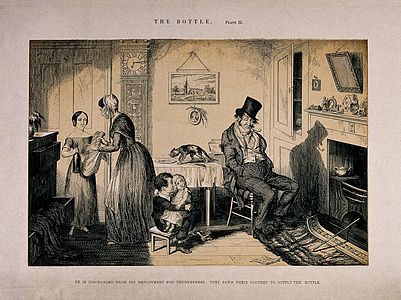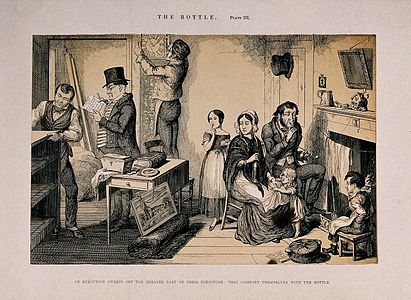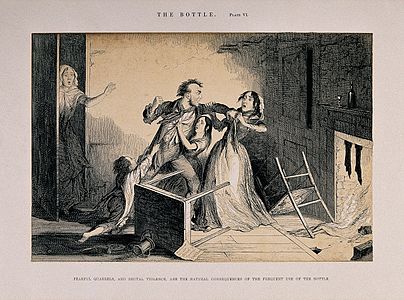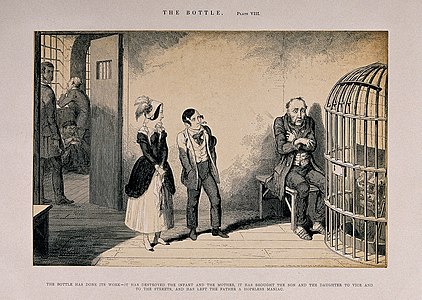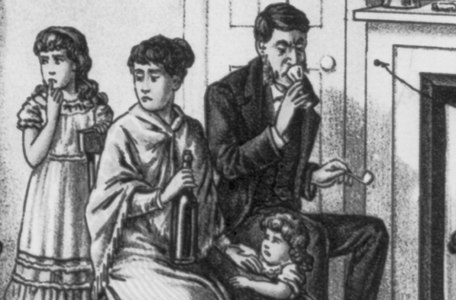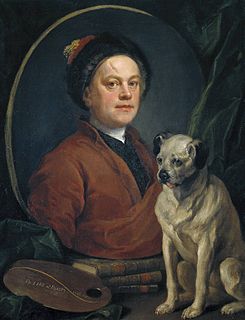
William Hogarth was an English painter, printmaker, pictorial satirist, social critic, and editorial cartoonist. His work ranges from realistic portraiture to comic strip-like series of pictures called "modern moral subjects", and he is perhaps best known for his series A Harlot's Progress, A Rake's Progress and Marriage A-la-Mode. Knowledge of his work is so pervasive that satirical political illustrations in this style are often referred to as "Hogarthian".

Margery Louise Allingham was an English novelist from the "Golden Age of Detective Fiction", best remembered for her hero, the gentleman sleuth Albert Campion.

John Leech was a British caricaturist and illustrator. He was best known for his work for Punch, a humorous magazine for a broad middle-class audience, combining verbal and graphic political satire with light social comedy. Leech catered to contemporary prejudices, such as anti-Americanism and antisemitism and supported acceptable social reforms. Leech's critical yet humorous cartoons on the Crimean War help shape public attitudes toward heroism, warfare, and Britons' role in the world.

Thomas Rowlandson was an English artist and caricaturist of the Georgian Era, noted for his political satire and social observation. A prolific artist and printmaker, Rowlandson produced both individual social and political satires, as well as large number of illustrations for novels, humorous books, and topographical works. Like other caricaturists of his age such as James Gillray, his caricatures are often robust or bawdy. Rowlandson also produced highly explicit erotica for a private clientele; this was never published publicly at the time and is now only found in a small number of collections. His caricatures included those of people in power such as the Duchess of Devonshire, William Pitt the Younger and Napoleon Bonaparte.
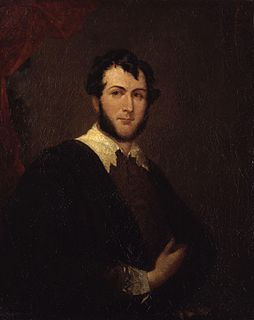
George Cruikshank was a British caricaturist and book illustrator, praised as the "modern Hogarth" during his life. His book illustrations for his friend Charles Dickens, and many other authors, reached an international audience.

Sketches by "Boz," Illustrative of Every-day Life and Every-day People is a collection of short pieces Charles Dickens originally published in various newspapers and other periodicals between 1833 and 1836. They were re-issued in book form, under their current title, in February and August 1836, with illustrations by George Cruikshank. The first complete one volume edition appeared in 1839. The 56 sketches concern London scenes and people, and the whole work is divided into four sections: "Our Parish", "Scenes", "Characters" and "Tales". The material in the first three sections consists of non-narrative pen-portraits, but the last section comprises fictional stories.

John Bartholomew Gough was a United States temperance orator.

Isaac Cruikshank (1764–1811), Scottish painter and caricaturist, was born in Edinburgh and spent most of his career in London. Cruikshank is known for his social and political satire. His sons Isaac Robert Cruikshank (1789–1856) and George Cruikshank (1792–1878) also became artists, and the latter in particular achieved fame as an illustrator and caricaturist.
This is a timeline of significant events in comics prior to the 20th century.

Isaac Robert Cruikshank, sometimes known as Robert Cruikshank was a caricaturist, illustrator, and portrait miniaturist, the less well-known brother of George Cruikshank, both sons of Isaac Cruikshank. Just like them he holds importance as a pioneer in the history of comics for creating several cartoons which make use of narrative sequence and speech balloons.

A Drunkard's Reformation is a 1909 American drama film directed by D. W. Griffith. Prints of the film survive in the film archive of the Library of Congress. The American Mutoscope and Biograph Company advertised the feature as "The most powerful temperance lecture ever depicted".
Joseph Grego was an art collector and exhibitor, author and journalist, inventor and graphics expert.
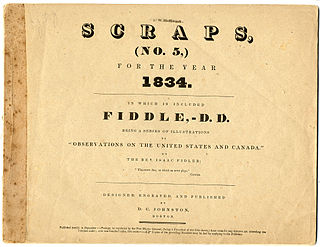
Scraps was an American satirical magazine published annually, initially on December 1 and later on January 1. Started in Boston in 1828 by the erstwhile actor David Claypoole Johnston, it was printed from engraved copper plates and sported four pages of cartoons in each issue. Some issues had alternative titles - such as Trollopania no. 5 for 1834, Fiddle,-D.D. no. 7 Nine numbers of the magazine were published between 1828 and 1849.
John O'Neill was an Irish writer, poet and playwright.

The Temperance movement in the United States is a movement to curb the consumption of alcohol. It had a large influence on American politics and American society in the nineteenth and twentieth centuries, culminating in the unsuccessful prohibition of alcohol, through the Eighteenth Amendment to the United States Constitution, from 1920 to 1933. Today, there are organizations that continue to promote the cause of temperance.

Norman Shanks Kerr was a Scottish physician who is remembered for his work in the British temperance movement. He originated the Total Abstinence Society and was founder and first president of the Society for the Study and Cure of Inebriety which was founded in 1884.
Mary Forbes Evans was a British writer, collector and the co-founder, with her husband Hilary Evans, of the Mary Evans Picture Library.
William Hatherell (1855-1928) was an English painter and illustrator who worked in genres including history painting, Arthurian legend, and the sentimental.
Harriet Ann Glazebrook was an English Temperance movement advocate, author and editor, and the Mayoress of Cardiff (1896-7).

Life in London – in full, Life in London; or, The Day and Night Scenes of Jerry Hawthorn, Esq., and his elegant friend, Corinthian Tom, accompanied by Bob Logic, the Oxonian, in their Rambles and Sprees through the Metropolis – is a book by the author and journalist Pierce Egan, first published in 1821. It depicts the progress through London of two young men and their associates, encountering both high- and low-life. The book has coloured illustrations by George and Robert Cruikshank, which were much admired at the time and subsequently.


